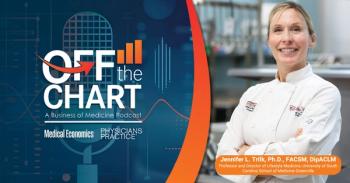
How the Growth of PAs Helped EHR Adoption Rates
As the PA profession gets younger, the adoption of EHRs has become easier at practices which employ them. This has helped increase adoption rates.
There are many variables that affect the adoption of EHRs in the practice environment. Probably two of the most important are cost and the technical expertise of the medical staff within the practice environment.
I have written previously about many benefits of hiring PAs (physician assistants) and other providers, such as nurse practitioners (NP), and it appears that the adoption of the EHR can be added to the list.
A recently published
The conclusions were:
Results: In 2013, three-fourths of practices that employed at least one (PA or NP) had adopted an EHR. Practices that employed at least one (PA or NP)la were 9 percent to 12 percent more likely to have an EHR that had advanced functionalities, compared with practices without a (PA or NP).
Conclusions: This study found an association between employment of (PAs and NPs), practice-level adoption of EHRs and practice-level adoption of certain EHR functionalities. Practices that employ (PAs and NPs) are prepared to implement team-based approaches to care that may be further enhanced through the use of health IT.
See more at:
Based on my own observations of the healthcare system over the past decade, we have a cohort of providers for whom technology might not be instinctive on one end of the spectrum. Increasingly, we have providers who have adapted willingly to new technology, with skills and understanding of the role that technology plays in medicine. At the other end of the spectrum is a cohort of providers who are extremely technologically savvy - for whom, having grown up in the computer generation, technology is an inherent skill.
One reason PAs fall into the technologically savvy group in higher proportions than other professions is that the unprecedented growth of the profession over the last couple of decades. The average age of the profession has shifted markedly downward and with the demand for healthcare providers at an all-time high, the PA profession is steadily expanding, with a lot of passionate and skilled providers expanding the workforce. This leaves room for not only greater adaption of technologies from hospitals and practices, but provides an end result of
Early on in my career, the average age of the PA was in the mid-40s. Now, more than 53 percent of the approximately 104,000 practicing PAs in the U.S. are under the age of 39. The
For the first time in history, we are educating medical providers across all healthcare professions, who will likely never touch a paper health record in their careers. Juxtapose this against the older cohort of providers, of which I am a member, who have spent virtually their entire careers utilizing paper records.
There are
Newsletter
Optimize your practice with the Physicians Practice newsletter, offering management pearls, leadership tips, and business strategies tailored for practice administrators and physicians of any specialty.








